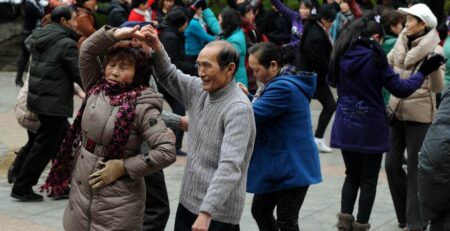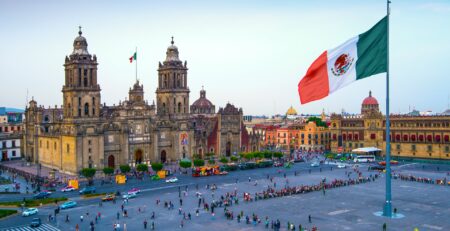Asia pension funds increase share of alternative assets
Asian pension funds are aggressively diversifying their portfolios to include alternative investments in a bid to circumvent the volatility of traditional asset classes and manage liabilities more efficiently.
A new report by Cerulli Associates found a rising trend of pension funds seeking more stable returns across market cycles and additional income avenues such as private credit and real assets.
“The potential to deliver strong absolute and risk-adjusted returns and beat inflation are key reasons Asia-Pacific ex-Japan pensions are investing in alternatives,” Shaun Ng, an analyst at Cerulli Associates, told AsianInvestor.
The pressure for yields is particularly high as pension funds have had to deal with a poor macroeconomic climate and rising benefit payments to their fast-aging membership base.
“Most Asian pension schemes’ alternative investments grew by double digits between 2018 and 2022, their urgent needs for yield are also driven by needs to meet their liabilities,” he said.
However, there are challenges for Asian pension funds, particularly in terms of limited understanding and lack of in-house expertise, when it comes to alternatives.
“Like traditional strategies, [they] are susceptible to a performance downturn when market cycles change,” said Ng.
In addition, the due diligence process is typically more stringent than for traditional investments because the reporting structure for private markets is typically quarterly and information may not be readily available, he said.
Based on Cerulli’s research, hedge funds are the number one strategy Asian pensions tend to outsource to external asset managers.
“Hedge funds rely heavily on the reputation and expertise of managers, which are lacking in many Asian pensions,” said Ng.
Asset managers with strong hedge funds teams should build relationships with Asian pensions to stand a higher chance of obtaining mandates.
“These pension funds are looking for external professionals who can navigate the complexities of hedge funds and deliver the required performance,” he said.
MACRO CHALLENGES
Vivian Tang, head of institutional for Asia Pacific at abrdn, echoes Ng’s observations but added a macroeconomic angle.
“When interest rates were low and income was scarce, many pension funds had to diversify into yield-enhancing alternative strategies, such as private debt and income-generating real assets,” Tang told AsianInvestor.
However, the dynamics have shifted with the changing macroeconomic environment.
“As rates cycle turned and the macro environment became more challenging in 2022, we have seen rising demand for alternatives solutions for pension funds to hedge against market volatilities and inflation risks,” she said.
Tang believes that these trends demand a flexible and tailored approach from asset managers.
“Asset managers with the breadth and depth of experience across alternatives is key, but we also need to be nimble in offering customised solutions as investors are in different stage of their alternatives journey,” she said.
“Every pension fund is unique, with distinctive risk profiles and investment goals. Asset managers need to keep this in mind when offering alternatives solutions.”
COMPLEXITY CONUNDRUM
Gary Leung, head of alternatives for Asia Pacific clients at JP Morgan Asset Management, discussed the challenges pension funds face when investing in alternatives.
“Income from alternative assets, such as rental income from real estate, distributed cashflow from real assets, and income from private credit, can provide additional levers for pension’s liability management,” Leung told AsianInvestor.
However, the complexity of managing these assets can often act as a barrier to pension funds, he said, with the broad range of sub-asset classes making it difficult for pensions to actively manage.
“Alternative investments often require a different level of expertise from traditional asset classes. Pension funds may lack the necessary knowledge or experience to effectively manage these investments,” said Leung.
Understanding and managing the risks associated with alternative investments is crucial for pension funds.
“Given the non-public nature and exclusivity to certain Alternative products, access is also a key challenge for pensions newly investing into this asset class,” he said.
DIRECT IMPACT
Many funds face underfunded liabilities and aging populations, like South Korea’s National Pension Service, which is projected to run dry by 2055.
Observers have called for more overseas diversification and aggressive strategies to extend the scheme’s longevity, according to Wei Li, portfolio manager multi asset quant solutions at BNP Paribas Asset Management.
Li sees a clear-cut opportunity for asset managers amidst these challenges.
“Asset managers should demonstrate sourcing suitable deals, strong track records in specialised alternative classes, and a willingness to educate clients,” he said.
Li underlines the growing importance of sustainability in investment strategies, and cites the ability of private asset investments to directly contribute to solving pressing challenges such as climate change.
“We believe private equity and private debt, real assets or natural capital can be promising candidates for impact alternative strategies. Offering ESG-integrated alternative investment strategies enables pension funds to meet sustainability policies alongside financial targets,” he said.
In an era where ESG considerations are increasingly important, asset managers who can integrate these factors into alternative investment strategies will have a competitive edge, said Li.
“The expansion of Asian pension funds into alternatives is not just a trend, it’s a necessity. For asset managers, this is not just an opportunity—it’s an invitation to shape the future of pension fund investing.”
Read more @asianinvestor











